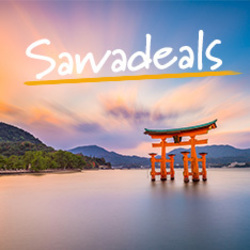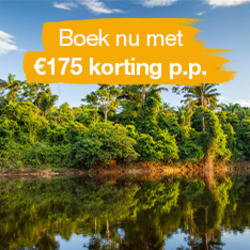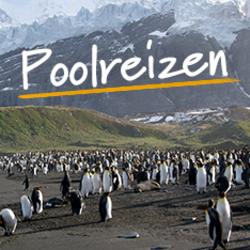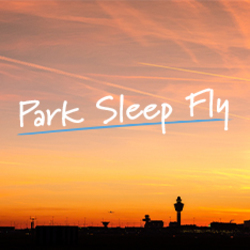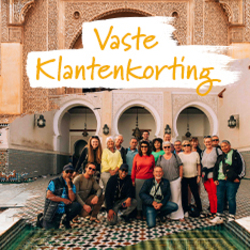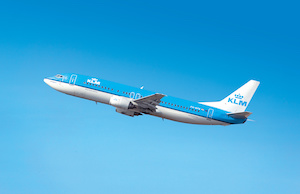Profiteer t/m 1 augustus
BekijkActivities
- Culture
- Cultural Wonders
- Natural Wonders
- — Explore the underground rivers and caves of Phong Nha-Ke Bang National Park — Take a boat trip around the limestone peaks of Ha Long Bay — Discover the Imperial Citadel and Thien Mu Pagoda in Hue — Experience the historic trading town of Hoi An — Visit the Vinh Moc war tunnels — Explore the Mekong Delta by boat — Try the world-renowned national cuisine
Food
-
1
Start Hanoi
Depending on your arrival time, you might like to start exploring this fascinating city by strolling the broad tree-lined avenues dating from the French period. There is a faded colonial charm where baguettes and good coffee are sold from doorways of grand buildings from a past era. There is a welcome briefing this evening with your leader followed by a welcome dinner at KOTO, a social enterprise that trains and employs underprivileged young people. The delicious food provides a fitting welcome to Vietnam and a chance to bond with your group. Accommodation: May De Ville Trendy Hotel & Spa (or similar)
-
2
To Ha Long Bay; cruise among limestone formations; overnight on traditional junk boat
Today, we visit an icon of Vietnam: Ha Long Bay, a World Heritage site where some 3,000 limestone peaks break through emerald waters to create a mystical, magical landscape. To get there, we rise early for the approximately four-hour drive and, upon arrival, board a traditional junk sailing boat, which is also our home for tonight. After launching, enjoy a seafood lunch on deck and drift among the forested pinnacles. We also stop at a beach where we can hike up to a viewpoint (it’s quite steep but the vistas are worth it), plus there’s time for a swim in a small sectioned-off area. Additionally, an optional kayaking trip (extra cost) may be available depending on weather conditions. Back on board, pull up a chair on the top deck and watch the sunset together, perhaps with a cold drink from the bar. When it’s time for bed, we have the comforts of twin-share cabins with private bathrooms. Accommodation: Overnight boat
-
3
Transfer back to Hanoi; overnight train to Dong Hoi
We continue to cruise around Ha Long Bay this morning before returning to port. We then drive back to Hanoi where we have a bit of free time to explore. You might like to join the local people by pulling up a plastic stool and sampling one of the many street food offerings; the bun cha (barbecued pork with rice noodles and fresh herbs) is particularly good. Late afternoon, we transfer to the train station to board our overnight train to Dong Hoi, 310mi (500km) south of Hanoi. Accommodation: Overnight train
-
4
Discover the caves of Phong Nha-Ke Bang National Park
Arriving at Dong Hoi at sunrise, we take a short transfer to our hotel to freshen up and have breakfast. We then journey (approximately one hour) to Phong Nha-Ke Bang National Park. Designated a World Heritage site in 2003, it is home to the oldest karst mountains in Asia, plus hundreds of cave systems and spectacular underground rivers. We first visit Phong Nha cave by boat. After, we stop for lunch before discovering the Thien Duong cave, known locally as Paradise Cave. This was only discovered in 2005 by scientists from the British Cave Research Association with the help of a local man who had heard the mountains ‘whistling’ while farming. In the afternoon, we return to our hotel in Dong Hoi, where we have time to relax and enjoy the rest of the day at leisure. Accommodation: Sam Quang Binh Hotel (or similar)
-
5
To Hue via the war tunnels of Vinh Moc
For early risers, there is an optional visit to the Dong Hoi Fish Market, where buyers and sellers haggle over baskets brimming with the latest catch. We then journey to Hue after breakfast, stopping en route at the Vinh Moc war tunnels. Less well-known than the Cu Chi tunnels in the south, these were predominantly used as bomb shelters during the Vietnam War. Village life carried on underground: children went to school, hospitals were established and films were even played using power from a generator. We next stop at the Hien Luong Bridge which crosses the Ben Hai River, which formed part of the border between North and South Vietnam from 1954 until reunification in 1975. We arrive in Hue mid-afternoon with free time before an optional group dinner. Accommodation: Park View Hotel (or similar)
-
6
Hue city tour; transfer to Hoi An
It is said that Hue is the cultural and historical centre of Vietnam, and there is plenty to see. The most outstanding sight is the Imperial Citadel, which has walls 6mi (9.5km) long; inside are the palaces and halls of the Mandarins, and the remains of the Forbidden Purple City, where only the emperor, his eunuchs and concubines were allowed. The Forbidden Purple City was almost totally destroyed during the Vietnam War's Tet Offensive, but the foliage-covered ruins are still atmospheric and the gaping bomb holes reveal the destruction wreaked upon the country. This morning, we visit the Imperial Citadel and the Thien Mu Pagoda. The pagoda was a centre for anti-government protest in the early 1960s and houses the Austin car that transported monk Thich Quang Duc to Saigon (now Ho Chi Minh City) in 1963 where he burned himself in protest against the president. The photograph of his self-immolation was printed in newspapers around the world. After lunch, we leave for Hoi An via the spectacular Hai Van Pass, 12mi (19km) of road winds up and over the fortress of mountains providing breath-taking views of the coast. Accommodation: Hoi An Sincerity Hotel & Spa (or similar)
-
7
Walking tour of Hoi An; free time to explore the market
This morning includes a walking tour of Hoi An, the original European trading port in Vietnam dating to the mid-16th century. It is now a living museum with attractive wooden merchant's houses and pagoda-style temples with Chinese, Japanese, Vietnamese and European architectural influences. It is also a marvellous place to wander around and enjoy the thriving riverside market and shops selling silk clothes. This afternoon is free. One popular option is to jump on a bike for a ride through the countryside past local markets, schools and villages before continuing to Cua Dai beach (3mi/5km). Accommodation: Hoi An Sincerity Hotel & Spa (or similar)
-
8
Fly to Ho Chi Minh City; visit main sites
We drive to Da Nang and then fly to Ho Chi Minh City (formerly Saigon), an exciting and absorbing city where scooters pack the streets and temples stand by modern developments. Devastated by the Vietnam War, it is now a bustling free-market city where anything goes. We include a visit to the Ben Thanh Market, Reunification Palace, Notre Dame Cathedral and War Remnants Museum. The museum has an interesting photographic record of the Vietnam/American War but some images are very graphic. Accommodation: Huong Sen Hotel (or similar)
-
9
Day trip to Mekong Delta
Journeying out of the city, we head to the lush countryside that is the Mekong Delta for a day tour. Known as the rice bowl of Vietnam, this region produces most of the country’s fruit, sugarcane and coconuts. We take a boat along the many tributaries and stop to see cottage industries along the way. We journey by sampan, a traditional low-riding wooden boat still used by the local people as the main form of transport. After sampling some of the local produce, we return to Ho Chi Minh City where our groups typically enjoy a farewell dinner. Accommodation: Huong Sen Hotel (or similar)
-
10
End Ho Chi Minh City
Our Vietnam exploration ends today after breakfast. However, if you’re not quite ready for the adventure to stop, speak to your sales representative about our extension to Angkor in Cambodia, probably the standout archaeological site in Southeast Asia.




